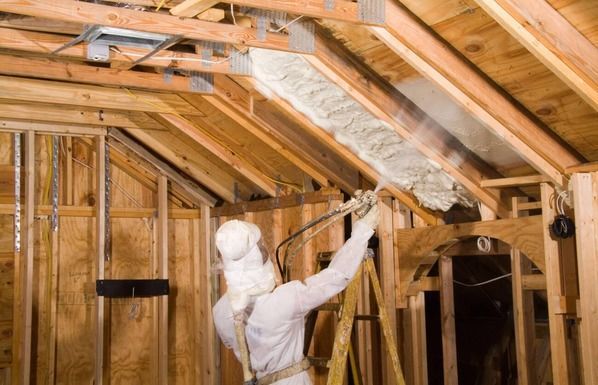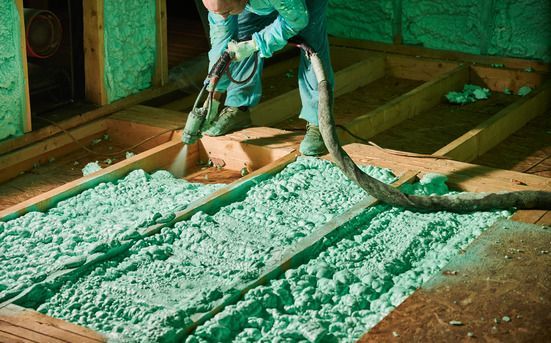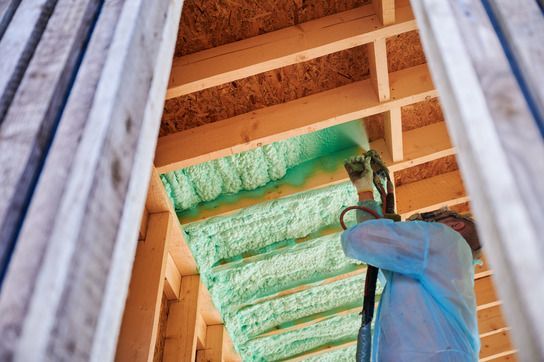Which Attic Insulation Is Best for Pasadena, CA Homes: A Comprehensive Guide
When it comes to selecting attic insulation for your home in Pasadena, CA, the right choice can significantly impact your comfort and energy efficiency. For optimal results, consider using Owens Corning R-38 Kraft Faced Fiberglass Insulation, known for its exceptional efficiency in maintaining temperature and reducing energy costs. The unique climate of Pasadena demands insulation that can handle both heat retention in cooler months and keep the heat out during summer.
Pasadena homes, especially older ones, may not have adequate insulation due to older building standards. Updating or enhancing your attic insulation can lead to substantial improvements in indoor comfort and energy expenditure. You'll find that making informed decisions in selecting materials tailored to your home's specifications not only benefits your wallet but also contributes to a more sustainable living environment.
Exploring insulation options is essential, but so is understanding the local climate implications on your choice. Availability of products like the Owens Corning EcoTouch, which combines sustainability with performance, provides homeowners with reliable solutions. This integrated approach ensures your home is not just insulated but optimized for lasting comfort all year round.

Understanding Insulation in Pasadena, CA
Insulating your home in Pasadena requires taking into account specific factors like the local climate, insulation principles, and energy efficiency standards. These aspects influence the type of insulation that best suits your home.
Pasadena Climate Considerations
Pasadena experiences a variety of weather conditions, with hot summers and mild, sometimes cooler winters. This climate necessitates attic insulation that effectively regulates indoor temperatures. Heat can easily enter homes through the roof during summer, making it crucial to have insulation that minimizes heat gain.
Fiberglass and spray foam are popular options here due to their ability to provide a good thermal barrier. Fiberglass is non-combustible, adding a layer of safety, which can be significant in a sunny region prone to higher temperatures.
Home Insulation Basics
Home insulation functions by reducing the rate of heat transfer, keeping warm air in during the winter and out in the summer. Different types of insulation offer varied benefits. It's vital to choose materials that provide balance between R-value, durability, and cost.
For attics in Pasadena, you might consider materials like fiberglass batts, cellulose, or spray foam. Cellulose is eco-friendly and provides good thermal resistance, while spray foam offers excellent air sealing properties. Assessing your attic's specific needs will guide your choice.
Energy Efficiency Requirements
California has specific building codes to ensure energy efficiency, directly affecting insulation choices. The state mandates minimum R-values for different parts of your home, which indicates resistance to heat flow. For ceilings, R49 is required, ensuring that your attic meets these standards for optimal energy efficiency.
These codes help maintain reduced energy costs and environmentally friendly living spaces. Proper adherence not only enhances comfort but also aligns your home with California's sustainability goals. Familiarize yourself with these codes for compliant and effective home insulation.
Types of Attic Insulation
Choosing the right attic insulation for your Pasadena home involves understanding different types of materials. Each type has unique benefits and features suitable for various applications and climates.
Blanket Batts and Rolls
Blanket batts and rolls are among the most common insulation types. Made from fiberglass, they are available in pre-cut sections or continuous rolls. These are ideal for DIY projects because they offer straightforward installation between rafters, joists, and studs. Look for materials with higher R-values to ensure better thermal resistance, which is crucial for reducing utility bills and maintaining indoor comfort in Pasadena's climate.
Pros:
- Cost-effective
- Easy to install
- Multiple sizes available
Considerations:
- Ensure proper fit to avoid gaps
- Requires protective gear due to fiberglass components
Loose-Fill and Blown-In
Loose-fill and blown-in insulation consist of small particles that can fill nooks and crannies effectively. Common materials include cellulose, fiberglass, and mineral wool. These are beneficial in hard-to-reach areas, ensuring comprehensive coverage. Professional installation is often recommended to achieve uniform application, which is vital for optimal energy efficiency.
Advantages:
- Excellent coverage
- Can be applied over existing insulation
Points to Note:
- Professional installation suggested
- May settle over time, affecting performance
Spray Foam
Spray foam insulation, available in closed-cell and open-cell forms, offers remarkable air sealing properties. Closed-cell foam provides higher R-values and greater moisture resistance, making it suitable for Pasadena's climate. When installed correctly, it expands to fill every nook, ensuring lasting insulation performance.
Features:
- High R-value
- Superior air sealing
Drawbacks:
- Higher cost
- Professional installation required
Foam Board or Rigid Foam Panels
Foam board insulation consists of rigid panels made from polystyrene, polyisocyanurate, or polyurethane. These are effective in providing a high insulating value with minimal thickness. Suitable for unvented attics, they offer structural support and water resistance, but cutting to fit can be labor-intensive.
Highlights:
- High insulating value
- Durable and moisture resistant
Things to Consider:
- Requires precise fitting
- Limited flexibility in awkward spaces
Reflective Insulation and Radiant Barriers
Reflective insulation and radiant barriers are excellent for reducing summer heat gain. Made of aluminum foils, they are installed in attics to reflect radiant heat away. This is particularly beneficial in Pasadena, where high temperatures can impact energy usage. This type of insulation works best when installed alongside other materials.
Benefits:
- Reduces cooling costs
- Effective in hot climates
Limitations:
- Less effective in cold temperatures
- Requires precise installation for best results
Selecting the Best Insulation Material
Choosing the best insulation for your attic in Pasadena, CA involves considering thermal performance, durability, installation ease, and cost. Each of these factors can significantly impact your home's energy efficiency and long-term costs.
Thermal Performance (R-Value)
R-Value measures how well insulation resists heat flow. In Pasadena, where temperatures can vary, selecting insulation with an appropriate R-Value for both summer and winter is crucial. Spray foam and cellulose often provide higher R-Values.
Consider climate-specific needs. In hotter climates, reflective or radiant barriers might supplement traditional materials. Aim for a balance between energy saving and installation cost, keeping in mind that higher R-Values usually lead to improved efficiency.
Material Lifespan and Durability
Material longevity affects maintenance and replacement frequency. Spray foam tends to offer longer lifespans, often lasting several decades without significant degradation. Fiberglass is also durable but may settle over time, slightly reducing effectiveness.
Moisture resistance is vital, especially during rare Pasadena rains. Materials like spray foam provide better moisture barriers, reducing risks of mold. Evaluate materials not just for how long they last under normal conditions but how they withstand environmental changes.
Ease of Installation
Various insulation types require different expertise levels and tools for installation. Fiberglass batts are user-friendly and can often be installed as a DIY project. Blown-in insulation, like cellulose, requires professional equipment for even application.
Consider access to professionals and your comfort with DIY projects when making a choice. Poor installation can compromise thermal performance, leading to higher energy bills and reduced insulation effectiveness.
Cost-Effectiveness
Assess initial costs against long-term benefits. While spray foam insulation might have a higher upfront cost, its superior R-Value and durability can lead to significant energy cost savings over time.
Budget constraints are important, but consider potential rebates or incentives for energy-efficient installations. Calculate the payback period of your investment by comparing your energy savings to your initial expenditure, ensuring the chosen material aligns with financial and environmental goals.
Installation Best Practices
Successful attic insulation installation requires attention to preparation, the choice between professional and DIY methods, and safety considerations. Implementing these best practices ensures efficiency and effectiveness in insulation performance while maintaining safety and minimizing risks.
Preparing the Attic
Start by clearing out any debris or obstructions. Inspect the attic for leaks or damage, addressing issues like moisture or pests to ensure a clean environment for insulation.
Next, measure the space accurately. Calculate the amount of insulation material needed using these dimensions. This helps in avoiding wastage and ensures complete coverage.
Remember to seal any gaps, cracks, or openings. Use weatherstripping or caulk to prevent air leaks that could compromise insulation effectiveness.
Professional vs. DIY Installation
Consider whether to hire professionals or undertake the project yourself. Professional installers bring expertise and experience, often providing warranties for their service. They handle complex tasks more efficiently, ensuring compliance with safety standards.
If you choose the DIY route, it demands research and understanding of insulation techniques. You might save on labor costs but risk potential mistakes that could affect performance.
Evaluate your confidence in undertaking the task and the complexity of your attic’s layout when making this decision.
Safety and Health Considerations
Safety is paramount during attic insulation. Always use proper personal protective equipment, such as masks, gloves, and goggles, to avoid exposure to insulation materials that can cause irritation.
Ensure adequate ventilation in the attic space. This helps prevent inhalation of particles and reduces the risk of heat exhaustion.
Lastly, take caution with electrical components. Insulation should not cover recessed light fixtures or exposed wiring unless they are rated for contact with insulation, to prevent potential fire hazards.
Insulation Maintenance and Upgrades
Regular maintenance of your attic insulation ensures its effectiveness in regulating temperature and energy efficiency. Check for damaged or wet insulation, as these can decrease its thermal resistance. If you notice any issues, address them promptly to maintain optimal performance.
Consider upgrading your insulation to improve efficiency. Fiber and cellulose insulation types offer long-lasting solutions. If your current insulation has a lower R-value, consider these materials for better coverage.
After an upgrade, it's vital to inspect the insulation annually. Look for signs of wear, such as compressing or pest infestations. Regularly addressing these issues can enhance the lifespan and effectiveness of your insulation.
A thorough air sealing of your attic can complement your insulation upgrade. This step prevents air leaks that could compromise the efficiency of your newly installed materials. Ensuring proper ventilation will further protect the insulation from moisture-related issues.
Environmental Impact and Sustainability
Choosing the right insulation for your Pasadena home can significantly influence your environmental footprint. Opting for sustainable materials not only reduces energy consumption but also promotes a healthier ecosystem. Selecting products with lower greenhouse gas emissions is crucial for reducing your home's impact on the environment.
There are several materials to choose from, each offering unique benefits. Fiberglass is popular due to its durability and energy efficiency. However, other options like cellulose, made from recycled paper products, offer a greener alternative. Cellulose insulation has a lower environmental impact due to its recycled content.
Using spray foam insulation provides excellent air sealing, minimizing heat exchange. This can lead to substantial energy savings, which contributes to a reduction in your carbon footprint. However, the production process for spray foam can have considerable environmental impacts, so weigh the trade-offs carefully.
Consider insulation materials with certifications for environmental sustainability. Look for options with GreenGuard or LEED certifications to ensure you're using eco-friendly products in your home. These certifications indicate that the materials meet strict environmental and health standards.
Incorporating energy-efficient insulation materials into your Pasadena home can enhance energy savings, reduce emissions, and contribute to overall sustainability. Exploring these options and understanding their environmental impact ensures you're making informed, eco-conscious decisions for your home’s insulation needs.
Incentives and Rebates for Pasadena Residents
Pasadena offers several incentives and rebates for residents looking to improve their attic insulation. Pasadena Water and Power provides a rebate of $0.10 per square foot for ceiling insulation upgrades. You can receive an additional $0.05 per square foot if you use a qualified local contractor or purchase materials in Pasadena.
To apply, submit an online rebate application once the installation is complete. Include a detailed receipt or invoice and any required supporting documents. Make sure to submit your application within 180 days of installation to qualify for the rebate.
In addition to local incentives, you might also be eligible for federal tax credits. For example, the ENERGY STAR program offers a tax credit of up to $1,200 for insulation projects. Combining these benefits with other energy-efficient improvements can maximize your savings.
Key Points:
- Ceiling Insulation Rebate: $0.10 per square foot.
- Additional Savings: Extra $0.05 per square foot with local contractors/materials.
- Application Deadline: Within 180 days post-installation.
Understanding these programs can greatly benefit your insulation project. Be sure to review all program requirements and consult with professionals to maximize your benefits.
You might also like
Book a Service Today
We will get back to you as soon as possible
Please try again later
Quick & Reliable
Don’t wait to improve your home’s energy efficiency and comfort. Contact Attic Squad today to schedule your free consultation and take the first step towards a more comfortable, energy-efficient home.
All Rights Reserved | Attic Squad



